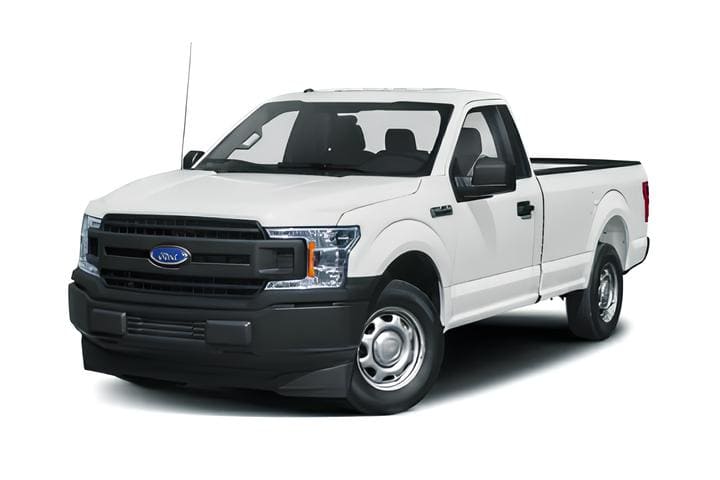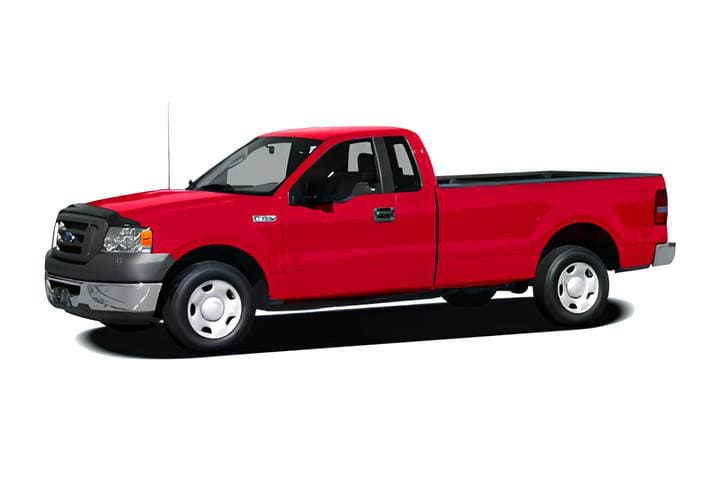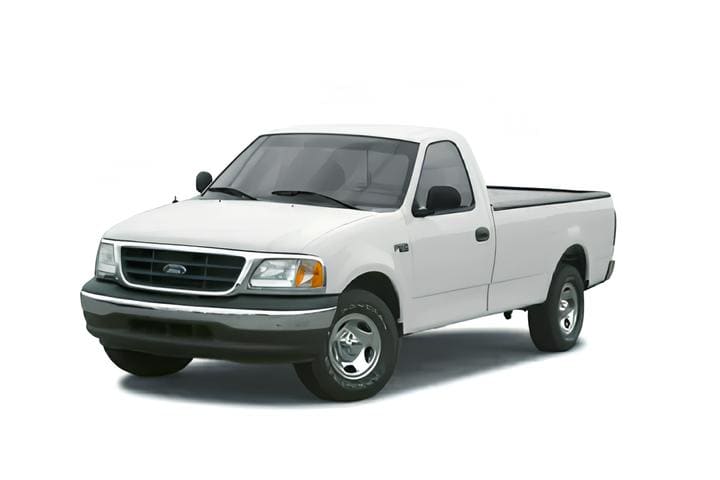Ford F-150 VIN Lookup
Get a Vehicle History Report of any Ford. Learn more about accidents, mileage, previous owners, sales, title records, recalls, theft, and other records.

2021-2024
The 2021 redesign introduced more tech, advanced safety features, and a hybrid version. The cabin remained spacious and quiet, with the 2.7-liter turbo V6 providing smooth acceleration and decent fuel economy. The PowerBoost hybrid offered impressive power with reasonable fuel efficiency. Features such as a foldaway gear selector, a tailgate that doubles as a workbench, and an optional built-in generator highlighted Ford’s focus on utility and innovation. Standard safety features included forward collision warning and automatic emergency braking with pedestrian detection. The lightly refreshed 2024 F-150 features exterior styling updates, with a standard 12-inch center touchscreen across the model lineup. The cabin is quiet, and crew-cab versions are notably spacious. The 2.7-liter turbo V6 delivers strong acceleration and fuel efficiency, while the PowerBoost hybrid offers more power with similar efficiency. The ride is still somewhat stiff, and handling is secure but not agile. Ford's Sync 4 infotainment system is user-friendly, and the truck offers a range of clever features. The Raptor R, with a 700-hp, 5.2-liter supercharged V8, is a new addition, and advanced safety features like AEB with pedestrian detection and highway driving assistance are standard, with options like BSW and RCTW available.

2015-2020
In 2015, the F-150 underwent a significant redesign with an aluminum body, resulting in a weight loss of approximately 700 pounds. This enabled the introduction of smaller, more efficient powertrains. The truck was available with five V-6 engines, including a turbo-diesel 3.0-liter, and a 5.0-liter V-8. Turbocharged versions of the 2.7- and 3.5-liter EcoBoost V-6s became popular, marking a shift in a market traditionally dominated by V-8s.

2009-2014
The 2009 refresh saw the introduction of Ford’s EcoBoost engine in 2011, offering a twin-turbo 3.5-liter V-6 that balanced power and fuel economy. This generation included a range of engines, including a naturally aspirated V-6 and a new 5.0-liter V-8. The SVT Raptor, introduced during this period, combined off-road prowess with performance, while the cabin became increasingly carlike and luxurious, especially in higher trims.

2004-2008
The 2004 redesign brought notable improvements in ride and handling, including a tighter turning circle and enhanced crash-test results. While braking performance was just adequate and the powertrain lacked smoothness, offroad performance, interior comfort, and outward visibility were commendable. This generation also boasted better noise isolation and overall build quality compared to its predecessors.

1997-2003
The tenth generation of the Ford F-150, spanning from 1997 to 2003, represented a significant evolution in the model's history. One of the major changes was the replacement of the 1960s-era twin I-beam front suspension with an independent front suspension. This change significantly improved the ride quality and handling characteristics of the F-150, making it more refined and comfortable to drive. The engine lineup also saw substantial updates; the previous entry-level inline-six-cylinder engine was replaced by a more modern, smaller-displacement V-6. The V-8 engines underwent a complete overhaul, with the introduction of modern overhead-cam motors in 4.6- and 5.4-liter capacities. These engines not only provided more power but also improved fuel economy, aligning the F-150 with the growing consumer demand for efficient yet powerful vehicles. Additionally, a supercharged variant of the 5.4-liter V-8, producing between 340 to 380 horsepower, was introduced in the SVT Lightning and Harley-Davidson Editions. The SVT Lightning, in particular, continued to blur the line between sports-car performance and the rugged utility expected of a pickup truck, offering an exhilarating driving experience.

1992-1996
The ninth generation of the Ford F-150, running from 1992 to 1996, marked a substantial redesign that aligned the truck more closely with the burgeoning SUV market. Ford updated both the exterior and the cabin of the F-150 to mirror the style and features of its new and increasingly popular Explorer SUV. This redesign was indicative of the beginning of the SUV era, and the F-150 was quick to adapt to these market changes. Customers were offered a choice of a base inline-six-cylinder engine and a wide range of V-8 engines, with capacities ranging from 5.0 to 7.5 liters. This generation also introduced a large-displacement turbo-diesel V-8, catering to those requiring significant towing and hauling capabilities. Adding a touch of style, the Eddie Bauer appearance package provided the F-150 with a cosmetic upgrade, including a two-tone paint job that appealed to those looking for a truck with both utility and aesthetic appeal.


